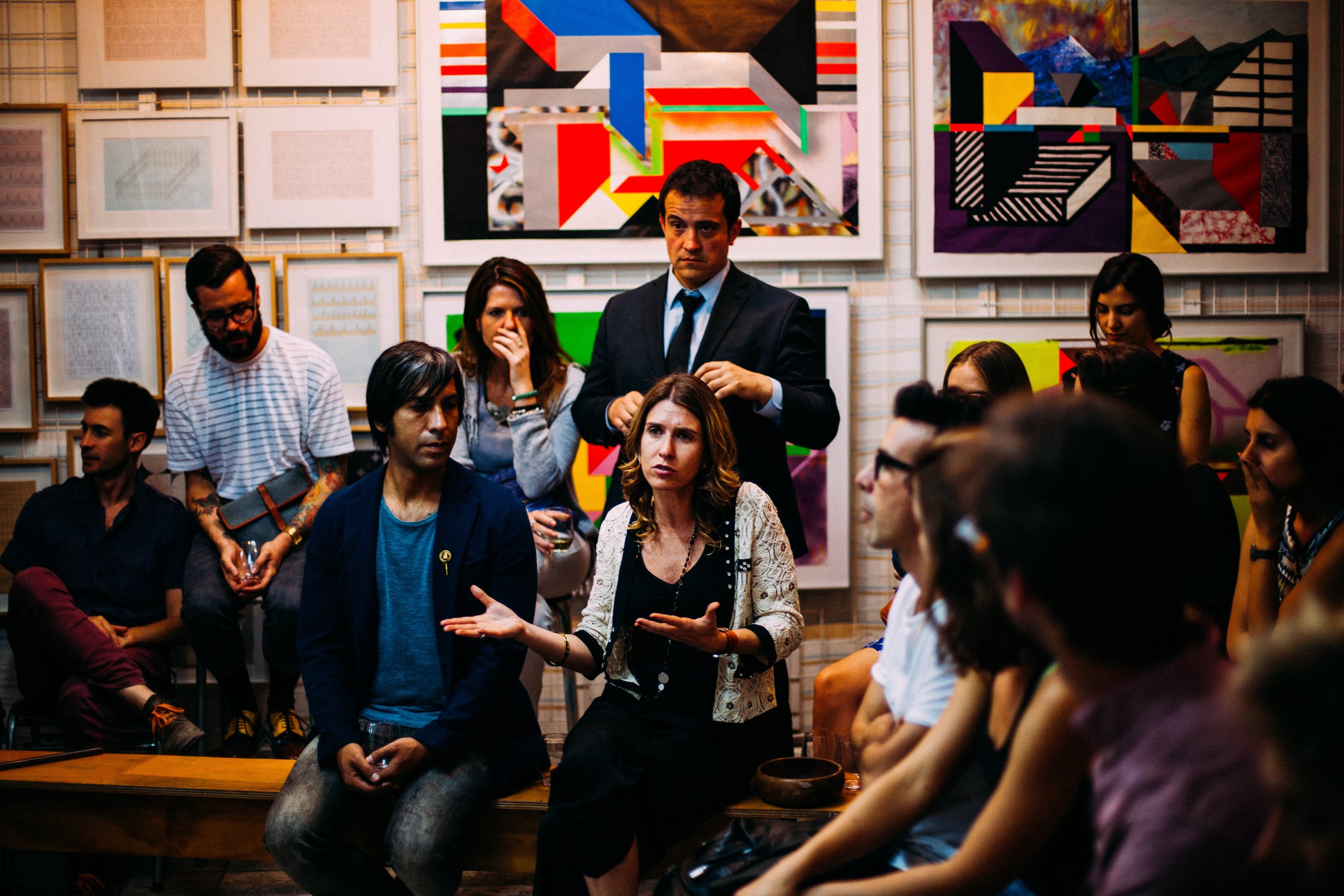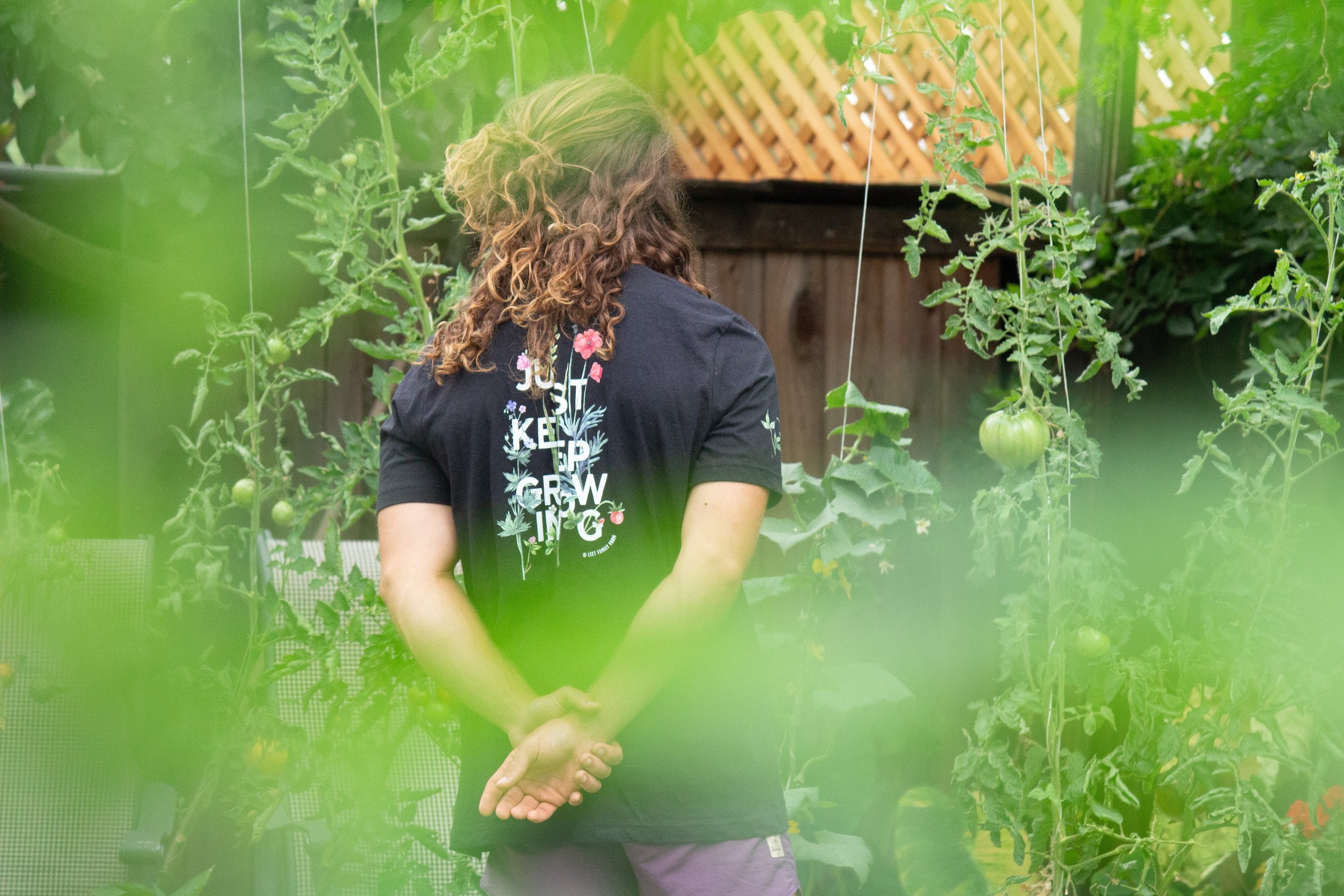What’s a just transition? And why should your community fight for one?
Everything’s more expensive these days.
Gas prices, mortgages, and rents are all blowing past records set prior to the last recession. Rising food prices are causing cash strapped consumers to miss meals. Add it all together, and the cost of living is at an all-time high.
And you know wages aren’t keeping up.
When I look at how similar this situation is to the recessions we’ve faced before, it’s obvious we’re in for another before long.
But just beyond the dread of a recession is the unshakeable feeling that something’s wrong with the system driving the cycles we seem to be stuck in.
It seems as though the economy and all of society were designed to keep us locked in a Sisyphean struggle to survive. Everyday, we work for a wage to pay for food, shelter, and clean water.
Meanwhile, the elite enrich themselves at our expense and the expense of the environment.
These expenses are adding up.
These expenses have left our world marred by the unhealed wounds of past practices as we open up new lesions in the land and poison our air and water.
As a result, not only do we stand on the brink of recession, but we are on the edge of a far more permanent, far more catastrophic collapse of ecology.
Luckily, we can limit the likelihood of both kinds of collapse with the same solution: a just transition.
What is a just transition?
A just transition is how we reorient our economy in the face of mounting crises.
It’s our only hope of taking comprehensive climate action while simultaneously striving for a more just and equitable society.
Movement Generation expanded on the foundation laid by the labor and environmental justice movements of the 70s and 80s to create the just transition framework.
The Movement Generation framework describes how we draw down power and shift away from an economy of violence and exploitation towards one of healing and regeneration.
The goal of the just transition is to make use of the moment we’re in to galvanize an unprecedented, global transformation of culture and economy to make a just, regenerative, liberated world real.
Why do we need a just transition?
The time for a just transition is now because of the twin ecological and economic collapses encroaching on us.
Collapse might seem like an exaggeration, but it’s far from it.
With over 1 million species at risk of extinction and wildlife populations having declined by over 50% in 50 years, the web of life we rely on has its strands snipped every day. As each species goes extinct, as each thread is irrevocably severed, the stability of their ecosystem, and the stability of ecology, becomes ever more fragile.
The mass extinction underway is the direct result of human activity. It’s nothing new. It’s not even in all cases connected to climate change.
Whether for fur, for flesh, or for fun, the Western world has been driving species to the brink of extinction and beyond for centuries. Beyond the intentional slaughter of species around the world, the imperial West has sought to dominate every inch of the earth.
As we’ve bent nature to our will, we’ve distorted it beyond recognition. When we clear cut some forests, burn others down, remove mountaintops, carve pits into the earth, and carry out all manner of method for resource extraction, we impoverish our planet as we attempt to enrich ourselves.
Even with all the focus on greening capitalism, the equation underlying our economy contains a term for constant growth that is inherently unsustainable. We can try our best to make growth green, but as long as our systems survive by sucking life from the land, sustainability will remain a dream.
Our only hope of addressing the climate crisis is by reinventing and restructuring of our economy and cultures, so they center ecological regeneration.
In a regenerative economy, our businesses, communities, institutions, and social structures would be focused on meeting our needs while maintaining the wellbeing of our environment.
Achieving this will require substantive change at every level of society.
We’ll have to redefine our approach urban design and develop neighborhoods that promote cohesion and connection as opposed to the isolation inherent in the individual American Dream.
We’ll have to approach nature from a stance of symbiosis where, as Sherri Mitchell puts it in her essay “Indigenous Prophecy and Mother Earth,” “We care for Mother Earth and Mother Earth cares for us.”
Admittedly, reorienting our relationship with the land from parasitic prosperity to symbiotic solidarity will take immense effort.
It won’t happen overnight.
There will be growing pains.
But we’ll reap many rewards as we make a regenerative economy our reality. Not the least of which will be the pride of preventing ecological catastrophe.
On the path toward regeneration, we’ll have to confront many of our shortcomings, flaws, and failures. As we address each and move through the uncomfortable process of growth, there’s much we’ll gain and reclaim – including our humanity.
To allow the land to regenerate and recover, we must be in right relationship with nature. We cannot continue look at the environment as simply a collection of resources or at ecosystems as sites of services. We must look at the world around us as an extended network of our family and community – what Sherri Mitchell calls “kincentric awareness.”
When we approach the world in this way, we do so with an extra layer of care and with a wish to support the holistic health of all life, and without any motive other than love. When we foster right relationship with the world, we open ourselves up to a new dimension of compassion while creating more space for self-care.
The way we interact with the environment influences the way we interact with ourselves and each other. The more willing we are to exploit the environment, the more willing we are to exploit each other. The more care and compassion we extend to the world, the more care and compassion we extend to others.
This is just one layer of the benefits we receive when we recenter ourselves around regeneration. But the transition in response to climate change can bring even more benefits as long as we prioritize justice and equity along the way.
As Movement Generation says, “Transition is inevitable. Justice is not.”
Whether by a descent into chaos after our failure to act, a technocratic transition dictated by the one percent, or a just transition led by people and communities, the world will be unrecognizable by the end of the century.
If we don’t claim the reins of change and direct the transition down the path of justice, the future awaiting us is not one that you or I would wish to see.
On the other hand, if we travel to the future down the path of justice, we might one day turn our ancestors’ freedom dreams into the real thing
How does the Just Transition Benefit You and Your Community?
Every community around the world will benefit from a just transition. This transition will create a clean economy built of interconnecting, interdependent communities with circular systems set up to eliminate waste and end extraction.
The only communities who may feel an adverse impact at first are those whose privileges and prosperity are built off the oppression of others. Even then, in the long run, they will benefit from the new space for more human connection.
Of course, the people and communities who will benefit the most are those who have had their power and wealth siphoned away by the titans of industry and empire.
In the current economy, wealth is extracted out of, and power pulled away from, the people and place where it originates.
We’re left without control over our lives as politicians and corporate complexes shape the fate of our communities without our input. And if they do seek our opinion, it is simply as a box to check after a decision has been made.
One of the central goals of the just transition is to flip that process on its head. Climate justice requires community voices be centered from the very beginning.
We can ensure this occurs by drawing down power to the local, community level, so people have the ability to determine their own destiny. This will require establishing new systems, structures, and institutions that afford us new forms of freedom.
We can create theses containers for community control as we take climate action, but this won’t be possible unless we intentionally build the bonds necessary for deep democracy to function.
Right now, most of us in Westernized cities have become disconnected from our neighbors and community members. But deep cooperation requires trust. We need relationships in place that allow us to lean on each other and seek support as we strive for something new.
In other words, to pursue the path of the just transition, we must practice the principles preached by adrienne maree brown in Emergent Strategy.
An Emergent Strategy for the Just Transition
We must focus first on establishing at the small scale what we wish to see at the scale of society. This will allow us to harness the fractal nature of reality by setting the basis for new patterns to emerge.
As we do so, we must adapt to the situations we encounter with an intentionality that allows us to harness shocks and slides, and direct them toward the changes we wish to achieve.
These changes will require interdependence and decentralization to be achieved. With every ecosystem experiencing unique shocks, slides, and stresses, every community must be empowered to take the regenerative actions they believe best support the health of their environment.
As we act, we’ll need to accept that not everything will work out the way we hope and plan at first. We’ll need to embrace the nonlinear nature of change and the need to iterate whenever we stumble.
That iteration will require resilience, as will the years ahead with all the crises they will bring. As long as we build and maintain resilience, we’ll be able to reach a regenerative future through the just transition.
Above all, if we want to enact a just transition, we’ll need to create more possibilities. We’ll need to channel our radical imagination to envision a world beyond the calamities colonization wrought, and we’ll need to do what we can to manifest our collective vision for the future.
We’re already living within someone’s imagination. Why can’t that imagination be our own?
These principles of emergent strategy, practiced day after day, will be what guide us to a living, regenerative economy.
These principles offer a paradigm that feels almost paradoxical. To change the face of the world, we must cleanse one single pore. And while we need a vision for the future that’s clear, we must accept that our path toward achieving it will be anything but.
Allow me to paint a clearer vision of what the just transition looks like and how you can get involved.
The Image & Vision of the Just Transition
The just transition is about collaboration, cooperation, and regeneration.
It’s about shifting away from an extractive economy that degrades and damages the land for the sake of material wealth.
It’s about shifting in a way that centers, uplifts, and empowers the experiences, voices, and visions of communities on the frontlines of environmental injustice.
It’s about redistributing the wealth and power accumulated by the ruling class.
The just transition allows us to use climate action to create a new kind of economy – one that is neither capitalist, socialist, or communist.
Some call it the regenerative economy. Others refer to it as the solidarity economy. Still others say mutualism or intercommunalism. Some simply name it the new economy.
Whatever title you choose, the desire to create something different from our current economy is clear.
This new economy is one which will center people and planet and put control in the hands of communities.
Worker-owned cooperatives, community land trusts, community investment groups, community energy and food cooperatives – these are the institutions that will allow communities the chance to shape their destiny. These structures and institutions will create the means for community sovereignty through self-sufficiency.
No longer will our communities be dependent on some outside entity to meet our basic needs. No longer will a ship stuck in the Suez Canal or a war halfway around the world affect our ability to put food on the table.
In the new economy, we won’t rely on a global system that sacrifices resiliency in the name of efficiency.
Instead, we’ll create localized and regionalized networks of autonomous, interacting, and interdependent communities that use distributed networks of farms, gardens, and urban food forests to meet the basic needs of our members.
Where needs cannot be met internally, we’ll look to neighboring communities for support. But no longer will out default approach be to look outside of our communities for solutions to our problems. Instead, we’ll develop the systems necessary to support ourselves and achieve some degree of self-sufficiency.
Of course, this will take time to achieve.
While our communities transition towards mutualistic self-management, we must prioritize two things: participatory decision making and relationship building.
By centering community voices in decision making, we’ll see community-centered solutions arise as people push for the power that is rightfully theirs. Mutual aid will likely expand as well as other foundational elements of a regenerative, solidarity economy.
Additionally, participating in decision making will let people practice the art of self-governance, which will prove invaluable in our cooperative communities.
However, arguably the most essential piece of the just transition is the relationship and community building necessary to facilitate the freedom and autonomy we’re fighting for.
You cannot rely on someone you don’t trust, and you cannot trust someone you don’t know. If we want to realize a regenerative economy, we need to create cohesive communities.
Thankfully, this can be accomplished alongside and through many forms of climate action like regenerative, community gardens. No matter what, if we don’t prioritize purposeful community building, we’ll encounter a firm ceiling to what we can achieve.
How can you get involved in the just transition?
If the just transition sounds like something you want to contribute to, the best place you can start is building relationships and community connections with the goals of the just transition and the principles of emergent strategy in mind.
Another great place to start is by joining a local mutual aid network, so you can support your community in meeting the needs of your community. In that same vein, it’s worthwhile to investigate any community land trusts, investment groups, or other cooperatives in your area that you could support.
However, be aware that just because a group claims to be community-based doesn’t mean they don’t reproduce the patterns of the dominant society. Make sure to look into the values, theories of change, and institutional practices to get a sense for how they operate.
If joining an existing organization isn’t for you, you can look for any gaps in your community you could fill to help build the structures your community needs to make the just transition real. You could start a mutual aid network, a solar energy cooperative, a network of regenerative gardens, or a just transition book club.
There are so many actions to choose from.
The action you choose will depend on the needs of your community and your unique strengths.
No matter who you are, there’s a role for you in the just transition.






